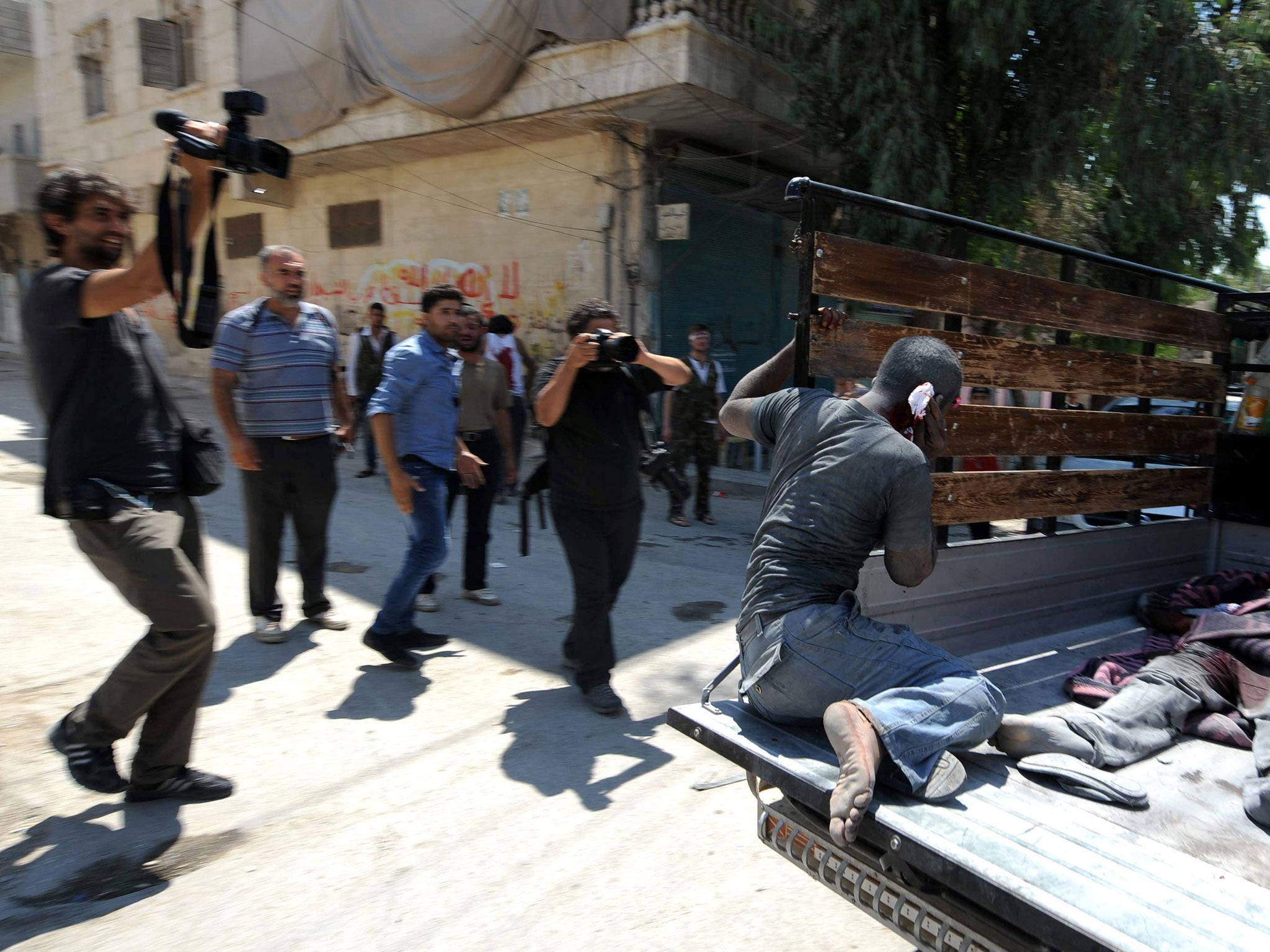The Independent's journalism is supported by our readers. When you purchase through links on our site, we may earn commission.
A barbaric war throws up a horror story that makes villains of all
There aren't words to describe the brutality of an image currently circulating in Syria. But in an age of photo-shop, who knows how much of it is real


Horror of horrors. A young Syrian, clean-shaven, perhaps in his early twenties, in a windcheater and with a Kalashnikov rifle slung over his left shoulder, holds the head of a decapitated man. The head appears to have been hacked from his unseen corpse with a knife. Just last week, we are told. It has short hair, a thin moustache, eyes mercifully closed. And – here we need an infinitely more terrible word than horror – the young man is holding the head over a smouldering barbecue.
Propaganda? Most certainly. Truth? Perhaps. But the internet has so skewed the Syrian war that propaganda has become truth and truth, propaganda — even myth. Everyone believes what they want to believe. And this awful image is not just a challenge to humanity. It is also, in its most obvious form, a challenge to journalism. Here I am in Damascus when a website – most assuredly sympathetic to the regime – produces ‘evidence’ of a war crime and lists the names and ranks of the other seven air force ‘martyrs’ who last week apparently endured the terror and pain of decapitation with the man in the picture.
I first heard of this gruesome picture in conversation with a friend yesterday morning. By midday, I saw it running from printing machines in the Ministry of Information in the Mezze suburb of the city, not for distribution to the press but for the files of the staff. Several could not bring themselves to look at the photograph, one woman leaving the room in order to avoid vomiting. This was not play-acting for my benefit. By chance, I was about to meet briefly with the information minister himself, Omran Zoubi, a tough, no-nonsense official to whom I gave the papers containing the pictures and the names of the supposedly dead air force personnel. He glanced at the picture and noted the names. “I can’t confirm this,” he said to me. “I need to ask first.” By last night, he had made no further comment. It would have been easy for Mr Zoubi to have said that he believed every word. But he had clearly never heard of this before.
So let us begin with the air force dead. For the record, they are listed as General Souhel Akram, parachute Major Youssef Ma’alla, Air Force Captain Hussam Asaad (who had allegedly survived an earlier massacre of air force personnel), Air Force Captain Ayham Al-Hussain, 1st Lieutenant Mohamed Ali Al-Dikar, 1st Lieutenant Maias Ramadan, and Sergeants Sarot Ghanija and Mohamed Diben. Most assuredly, the Syrian air force can confirm – indeed, must confirm – if these are real names. And the details on the website – which appears to have come from Lebanon and is highly sectarian (in this case, anti-Sunni Muslim) in tone – are quite straightforward: the air force men were flying on a helicopter from Latakia airport on the Mediterranean coast, carrying food and humanitarian aid to villages and army units around Maaret al-Noman when they were shot down over Idlib province. All survived. They were then beheaded.
But the website then goes into lip-smacking detail as to how the air force officers were decapitated with butcher’s knives and their heads carried on sticks through neighbouring Syrian villages, “ imitating what the Mouawia Army did to the head of Husain bin Ali in Kerbala – which means they don’t respect the grandson of the Prophet.” Husain was indeed the grandson of Mohamed – his death was to create the great chasm between the Islamic sects – and he died at the hands of the army which belonged to the dead Omayad Caliph Mouawia bin Abu Sufian. In other words, the dead Syrian officers were treated as their Shiite imam was defiled at the Battle of Kerbala in 680 AD.
The implication was that the executioners were Sunnis and that the victims were Shias — or from that intriguing offshoot of Shiism, the Alawites, to which President Bashar Assad belongs. But there is no evidence to what religion the dead men – if they are dead – belonged. And there is another weird side to all this. The killers were described as ‘Free Syria Army gangs”, yet most of the atrocities – and decapitations – carried out by the armed opposition to the regime have been the responsibility of extreme Islamist groups. Why would the largely secular – a painfully inaccurate word in any Syrian context – FSA commit such a war crime?
If it was committed. Pictures and video from the Iraq war show that Islamist groups were prepared – and happy – to carry out such executions, showing even the death agonies of the beheaded men. Yet the Syrian regime has itself indulged in barbarity, its own air force officers this year bombing civilians in towns across northern Syria. And if even part of yesterday’s horror story is true, was the military helicopter taking only ‘ humanitarian’ supplies across Idlib? And did this horror of horrors actually happen? Did these men even exist? Alas, in war, photoshop technology and the internet have made villains of us all.
Buy the new Independent eBook - £1.99 Two decades of reportage on a tragic conflict the West can no longer afford to ignore - by one of the world’s great foreign correspondents
Bookmark popover
Removed from bookmarks